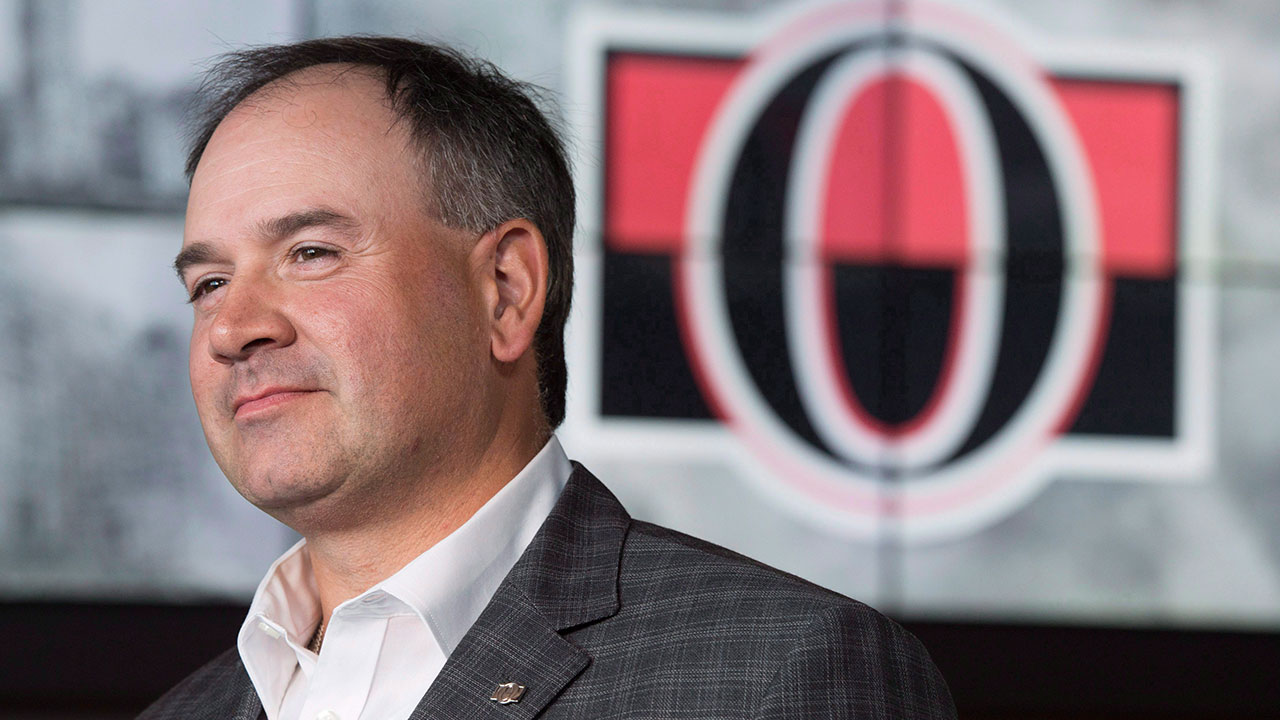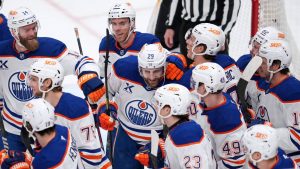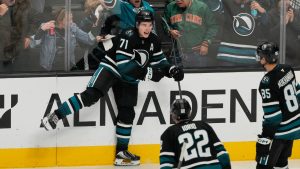Scouts and general managers are expected to battle with each other at draft time.
It’s part of the trade. What scout wants to give up on selecting a prospect he has watched all season because the GM is about to trade the pick away for a current player to help the team right now?
That theme could change this year with the Ottawa Senators. Chief scout Trent Mann noted in an interview that the Senators already have a lot of prospects in the system as well as a lot of picks this year (11), meaning the time could be right to trade a pick or move up or down in the draft to address the needs of a team on the verge of competing.
On this score, he seems to be on the same page as GM Pierre Dorion.
The Senators have the seventh overall pick at the July 7-8 draft, but Dorion has made it plain he will listen to offers for that pick. Because this draft is pretty deep, but not top heavy with talent, it could make it easier to select a player beyond round one and still get someone to be in the mix a few years down the road.
The emphasis at the draft and all summer long will be making moves to lift the Senators NOW – and that might mitigate the usual scout vs GM arguments to keep or move a pick.
“Scouts want to pick players, that’s what they’re paid to do,” Mann said Tuesday, in the wake of last week’s prospect combine in Buffalo. “They want to have an impact on the organization as well. But you know, I understand where we’re at in our rebuild . . . it doesn’t mean we just keep picking (selections) but have to be understanding that there are some needs in-house that we can’t provide right now (via the draft)."
“It’s time to start winning,” Mann says. “We know that in Ottawa. We have to be kind of a ‘team player’ on that one a little bit and understand what’s going on. But our group is OK. We have a good mix of veteran scouts with some of the younger ones in the early part of their career. I think the older group will keep things kind of grounded pretty well."
“We’ll see how it plays out, but I would imagine that the scenarios will go right down to the last 24 hours (before the draft) for sure.”
Mann views this as a good draft, though minus the obvious superstars on the menu in the realm of a Connor McDavid or Auston Matthews.
“Down the road, who knows, right?” Mann says. “I mean, Drake Batherson was a fourth round pick. So, you kind of have to keep it all in perspective. But based on what information is out there right now and what we see, those types of (star) players don’t seem to be available. However, there are a lot of good players, such that it stretches out a bit longer in the draft."
“So, if you’re picking 20th, you may still get a player that you’d be willing to take earlier because there are attributes there that you value more than other teams,” Mann added. “I think there will be good players to come out of it no matter what. And we’ll certainly get someone that we really like at No. 7, if that’s where we end up picking. Into the second round, there will still be players we like.”
Without a top-heavy, easy consensus on the top five to ten picks, the situation is ripe for movement and unpredictable selections. Shane Wright, Juraj Slafkovsky and Logan Cooley are excellent prospects, but there isn’t the separation between them and some of the others in the way there is some years.
Could be a busy draft
“Tom Fitzgerald (New Jersey Devils’ GM) has been very clear in the media that he’s willing to move No. 2, so that can be very enticing depending on how that goes,” Mann says. “But for us, you can also move back and maybe acquire something we don’t really have in-house and would like to have, and still get a player we feel strongly about."
“Maybe there’s three players you really like and can move back and you’re still able to get one of those three plus a piece that comes in return. . . you have to evaluate and see if it makes sense.”
Mann notes that Montreal, Buffalo, Arizona as well as Ottawa are teams with a lot of picks, which could be a recipe for movement at the draft.
Sens set their own game plan
As a group, the Senators have a reputation for going ‘off the board’ with their selections. This is not because the Sens think they are smarter than everyone else – they are assessing needs in the organization and aiming toward a particular goal – building a team that can win in the playoffs.
Keep in mind that Ottawa received criticism for selecting Brady Tkachuk fourth overall in 2018 when there were higher scorers available. We all know how that one turned out. Of course, there will always be hits and misses but on balance Mann and his group have an excellent track record.
“Sometimes, maybe a pick looks great right now, but for us as a scouting staff, we’re not looking at next year, we look down the road,” Mann says. “Like, when we picked Brady Tkachuk, we knew the rebuild was just starting and we needed a captain-type guy. Along with the type of player he is, it made complete sense for us, when there’s other people perceived to be a better player or scorer – but to me they were just pieces compared to the package Brady brought. You can’t pass on these players because you don’t know when they’ll come along again.”
It will be interesting to see Ottawa’s selections this time around. Because of where they are in the rebuild – in the advanced stages – they can look even further down the road, perhaps with a three or four-year window of development, rather than maybe two years when the rebuild is in the early stages.
“We’re just trying to cover all the bases, so that when it’s our turn to get into the playoffs, we're going to be able to win.”
Do the Senators use the Central Scouting list?
The Senators devise their own ranking list of prospects, done through “analytics only,” which the staff uses to help identify players that could address certain needs in the organization.
The NHL’s Central Scouting list is helpful, Mann says, to augment their own information and also to cover players that Ottawa scouts may not have had a chance to see.
“Central Scouting is FOR the NHL teams, to be the eyes out there, in different parts of the world to help you identify some players that maybe you’re not going to get to, because it’s physically impossible to get to all those spots,” Mann says.
Their list of players and trends is valuable, says Mann, because it can name someone that team scouts may need to go look at sooner rather than later, based on a player’s progression.
With so many other draft lists out there, the Senators can’t use them all, or even be certain of the validity of some of them. There are one or two historically reliable lists useful for considering where a certain player may go in the draft.
In the end, scouts have to rely on their own instincts.
“You have to be careful sometimes that it’s not an overload of information,” Mann says. “Pick, and choose, sometimes.”








